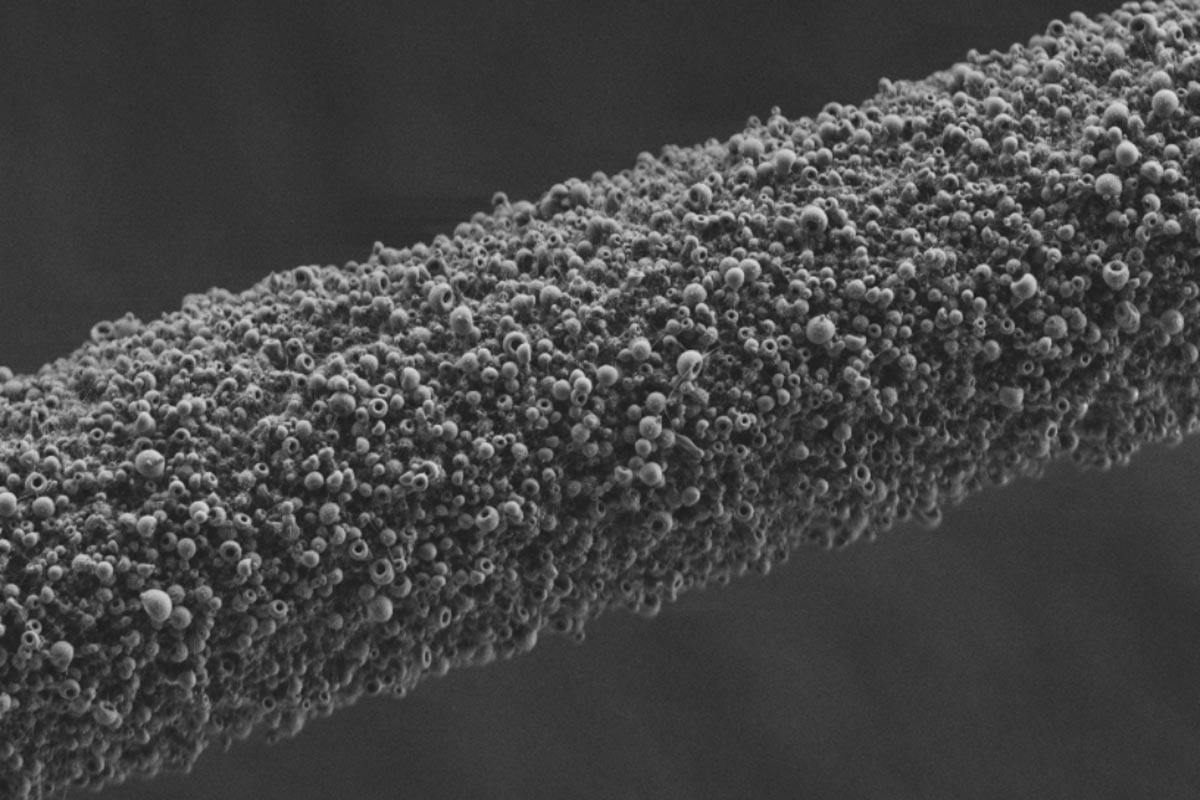WHAT DID THE 2011 EARLY CAREER AWARD ALLOW YOU TO DO?
With the support of a U.S. Department of Energy Early Career Research Program award, I worked with colleagues in the U.S., the U.K., and Portugal to carry out an experiment to search for exotic particles that may have been produced when the universe was less than a microsecond old.
These particles, if they exist, are expected to be passing through the earth at high speed. Some estimates suggest that, in the neighborhood of our solar system, there may be a few dozen particles in every cubic foot of space. But they have never been directly detected in a laboratory setting. By searching for these particles, we learn about the fundamental building blocks of our world, while also gaining insight on the earliest origins of the universe.
Our experiment was known as LUX, which stands for Large Underground Xenon. It consisted of a bath of liquefied xenon surrounded by sensitive light detectors and other carefully selected materials and instruments. Xenon is a noble gas, present in the earth’s atmosphere at a concentration of about one part per 10 million. We cool the xenon to about -150 degrees F, where it becomes a liquid more dense than solid aluminum. If an exotic particle passed through this cryogenic bath, it might be scattered by one of the atomic xenon nuclei. We could detect this by observing the faint burst of light that the surrounding fluid would produce.
To protect the experiment from ordinary cosmic radiation, we placed it almost a mile underground, at the Sanford Underground Research Facility in Lead, South Dakota.
My Early Career work focused on developing a better understanding of the purity of the liquid xenon and its response to the passage of particles such as electrons and photons. My colleagues and I gained a detailed understanding of the basic properties of the liquid xenon, and this allowed us to confidently search for ancient relic particles from the Big Bang. In the end, we found no evidence for the existence of such particles; this placed important new constraints on the types of fundamental particles that might exist in our universe.
The search is not over, however. Today we are commissioning a new and more sensitive experiment, known as LUX-ZEPLIN (LZ), in the same South Dakota laboratory. From 2017 to 2019 I served as spokesperson for the LZ scientific collaboration, a role for which the Early Career award helped prepare me. This is an exciting time for us; after many years of work, we will soon be hunting for dark matter again.
ABOUT:
Carter Hall is a professor in the Department of Physics at the University of Maryland.
SUPPORTING THE DOE SC MISSION:
The Early Career Research Program provides financial support that is foundational to early career investigators, enabling them to define and direct independent research in areas important to DOE missions. The development of outstanding scientists and research leaders is of paramount importance to the Department of Energy Office of Science. By investing in the next generation of researchers, the Office of Science champions lifelong careers in discovery science.
For more information, please go to the Early Career Research Program.
THE 2011 PROJECT ABSTRACT:
Search for Weakly Interacting Dark Matter with Liquid Xenon
The nature of the mysterious dark matter is one of the most fascinating questions in fundamental physics today. Although its existence is convincingly demonstrated by a host of cosmological and astrophysical studies, there is no known fundamental particle that can account for the properties of dark matter. Many new physics models, however, include stable, weakly interacting massive particles (WIMPs), which are promising dark matter candidates. If the dark matter is indeed composed of WIMPs, then it follows that the Milky Way’s dark matter halo could be directly observed by searching for its extremely rare interactions with the atomic nuclei in a terrestrial detector.
We will search for these interactions using liquid xenon as our target material. Our search will initially take place within the context of the Large Underground Xenon (LUX) experiment, which is currently being commissioned at the Sanford Laboratory in Lead, South Dakota. The LUX experiment is expected to be the most sensitive WIMP search ever performed and will improve upon current experiments by more than an order of magnitude.
We will also develop new experimental techniques to reduce backgrounds and improve the reliability of liquid xenon technology in anticipation of the ambitious dark matter experiments which will supersede LUX in the next three to five years.
RESOURCES:
D.S. Akerib, et al. (LUX Collaboration), “First results from the LUX dark matter experiment at the Sanford Underground Research Facility.” Phys.Rev.Lett. 112, 091303 (2014). [DOI: 10.1103/PhysRevLett.112.091303]
D.S. Akerib, et al. (LUX Collaboration), “Tritium calibration of the LUX dark matter experiment.” Phys.Rev.D 93, 7072009 (2016). [DOI: 10.1103/PhysRevD.93.072009]
D.S. Akerib, et al. (LUX Collaboration), “Results from a search for dark matter in the complete LUX exposure.” Phys.Rev.Lett. 118, 021303( 2017). [DOI: 10.1103/PhysRevLett.118.021303]
DOE Explains… offers straightforward explanations of key words and concepts in fundamental science. It also describes how these concepts apply to the work that the Department of Energy’s Office of Science conducts as it helps the United States excel in research across the scientific spectrum. For more information on dark matter and DOE’s research in this area, please go to “DOE Explains…Dark Matter.”
Additional profiles of the Early Career Research Program award recipients can be found at /science/listings/early-career-program.
The Office of Science is the single largest supporter of basic research in the physical sciences in the United States and is working to address some of the most pressing challenges of our time. For more information, please visit www.energy.gov/science.


